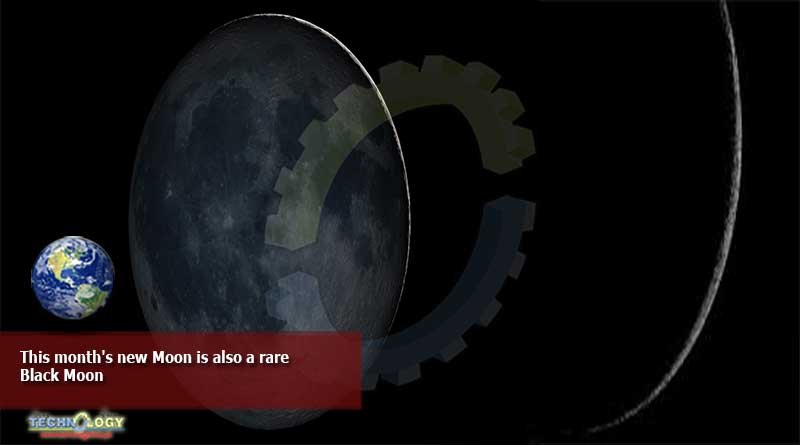The new Moon will rise on Tuesday, Aug. 18 at 10:41 p.m. EDT, according to NASA’s SkyCal site. This month’s new Moon is also a rare Black Moon, as it happens to be the third new Moon in a season with four new Moons.

CELESTIAL OBJECTS COME AND GO FROM OUR VIEW IN THE NIGHT SKY, as they fling by or orbit around the Sun. Whether it be the full moon or a meteor shower or just the best night to see Mars, we’re here to direct your eyes skyward and tell you to look up and appreciate the wonders of space from Earth.
This week, we’re asking you to marvel at the beauty of the elusive Black Moon as Earth’s only natural satellite embarks on a new lunar cycle on Tuesday night.
The new Moon will rise on Tuesday, Aug. 18 at 10:41 p.m. EDT, according to NASA’s SkyCal site. This month’s new Moon is also a rare Black Moon, as it happens to be the third new Moon in a season with four new Moons.
Every 27 days, 7 hours, and 43 minutes, a new Moon appears in the skies.
The Moon’s lunar cycle is marked by a few milestones. At the peak of its cycle, a small sliver of the Moon’s crescent gradually appears in our skies as it waxes to become a full Moon. After that, it begins to wane into invisibility once more, before beginning anew.
As the Moon beings its new cycle, it appears at its most faint — this causes other celestial objects to shine even brighter. That is because at the beginning of its cycle, the Moon is on the same side of the Earth as the Sun, with its dark side facing our planet. As a result, to us Earthlings, it appears as though our natural satellite has gone almost invisible.
However, this month’s new Moon is extra special as it is considered a Black Moon. These occur once every 33 months.
Each season typically has three months and therefore, three new Moons. This summer officially began on Saturday, June 20, marked by the summer solstice and a new Moon happened to fall on June 21. Therefore, this summer season will have four new Moons, in June, July, August, and in September.
The new Moon is a great opportunity to observe other celestial objects in the night sky as the light coming from the Moon will be too faint to interfere with the light coming from stars, planets, and galaxies.
Sky gazers can enjoy this lunar silence on Tuesday and Wednesday night, then the Moon will slowly start to fade back into existence on Thursday night as a thin crescent.
The next seasonal Black Moon will take place on May 19, 2023.
the article is originally published at inverse.
